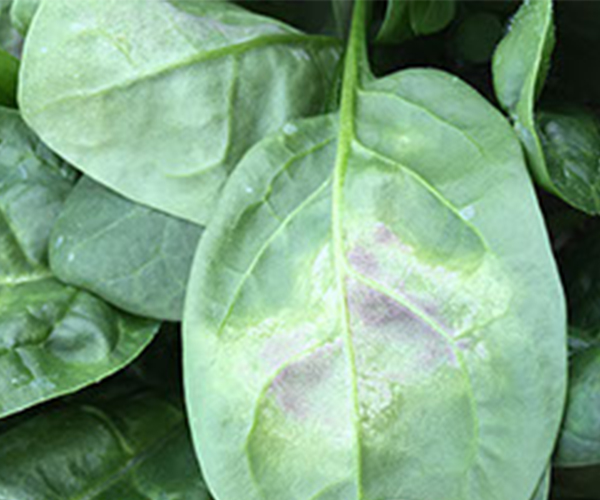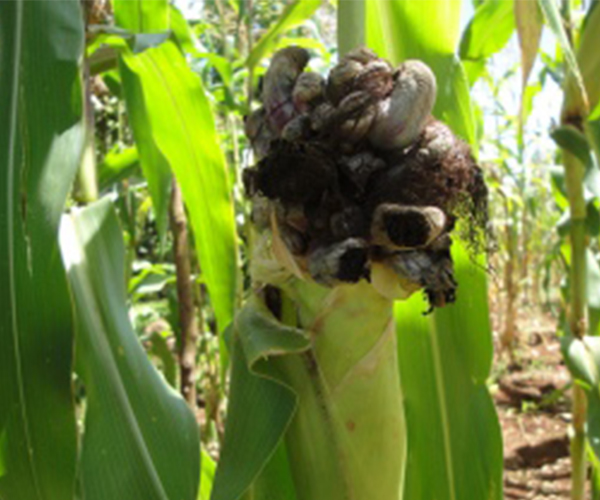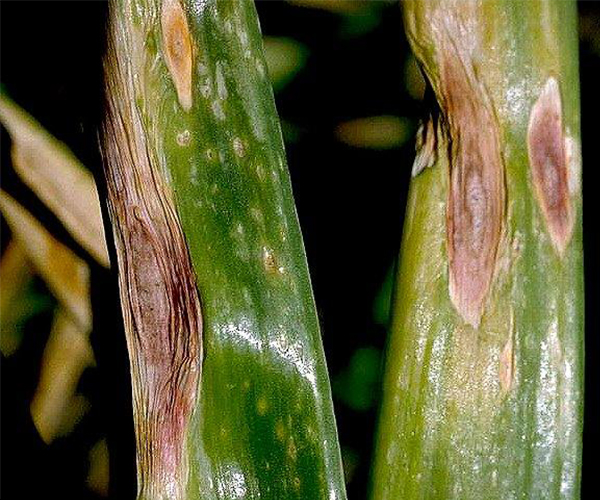
Early Blight
Target Crops : Potatoes and Tomatoes
Damage : Tomatoes can tolerate losing some of their low leaves to early blight, but if persistent rain causes the disease to move more than halfway up the plants, they may be doomed. Most of the time early blight weakens plants but does not kill them.
Prevention: Make use of trellises and supports that will keep the vines off the ground.
Avoid watering from above: Using soaker hoses or drip irrigation keep foliage dry, which makes it more difficult for early blight and other diseases to spread. Avoid overhead watering techniques (sprinklers).

Late Blight
Target Crops : Potatoes and Tomatoes
Damage : Tomato or potato plants that have lost their leaves to late blight are poor producers. When tomato plants survive and go on to produce fruits, the fruits often have leathery patches that do not ripen properly. If not dug up early, blight spreads to potato tubers causing red-brown decay which will eventually rot and prevent them storing well.
Prevention: Avoid watering from above: Using soaker hoses or drip irrigation keep foliage dry, which makes it more difficult for late blight and other diseases to spread. Avoid overhead watering techniques (sprinklers).

Powdery Mildew
Target Crops : Flowers Beans Carrots
Damage : Powdery mildew fungi clog up leaf pores and block light to photosynthetic cells, so the plants are weakened in their ability to use light as an energy source. New growth stops, old leaves fall off, and the plants struggle to stay alive.
Prevention
- Do Not Crowd Plants.
- Do Not Grow Susceptible Plants in the Shade.
- Dispose of Infected Leaves and Stems.
- Water the Soil, Not the Plants.
- Buy Mildew-Resistant Varieties.

Leaf Spot
Target Crops : Broccoli, Cabbage, Kale and Cauliflower
Damage : Leaf spot can weaken plants, but it will not kill them. However, when already infected plants receive more than twelve hours of constant warm rain, spores can be distributed so extensively that the plants cannot recover.
Prevention: Make sure plants get good air circulation and plenty of sun, and keep weeds controlled to promote prompt drying after rains. Use mulch to keep soil from splashing onto plants in heavy rains. Avoid using sprinklers or other overhead irrigation methods after cabbage, broccoli or cauliflower heads have formed.

Bean Root Rot
Target Crops : Beans, Potatoes, Vegetables and Flowers
Damage : When you pull up an infected bean plant, it will have a skimpy root system with most small roots missing. A dark area of decay may be present on the main stem near the soil line.
Prevention:
- Plant beans in soil that has been thoroughly cultivated.
- Do not follow potatoes with beans.
- Proper spacing.
- You'll lose fewer seedlings to root rot diseases if you wait until the soil is warm to plant beans.

Spinach Downy Mildew
Target Crops : Spinach
Damage : Spinach leaves with black patches and mold are not appealing to eat. Sometimes the inner leaves of infected plants escape damage.
Prevention:
- Choose resistant varieties, which are widely available.
- Make sure plants get good air circulation and plenty of sun.
- Rotate spinach to a fresh site to prevent disease buildup.
- Use mulch to keep soil from splashing onto plants during heavy rains.
- Avoid using overhead irrigation methods

Anthracnose
Target Crops : Watermelons, Cucumbers and Mangoes
Damage : Badly affected leaves turn brown and drop off. If wet weather persists, melon and cucumber fruits develop soft dark spots that become sunken rot spots.
Prevention:
- Proper spacing, so sunlight reaches all the leaves and air circulates freely.
- Avoid low places with repeated heavy dews when choosing a place to grow melons.
- Use mulch to keep soil from splashing onto new leaves.

Tomato Root Knot Nematodes
Target Crops : Tomatoes, Peppers, Carrots and Vegetable crops
Damage : Plants grow slowly, in erratic spurts, and are generally dwarfed in size. When you dig up a troubled tomato or pepper plant, numerous swellings and galls are evident on the roots. Because root knot nematodes don’t move far in the soil without human help, neighboring plants may be infected while those at the end of the row remain healthy.
Prevention:
- Good crop rotations prevent nematode buildup.
- Nematodes may be unavoidable in sandy soils in warm climates.
- Use only nematode-free plants purchased from reliable nurseries.

Maize Smut
Target Crops : Maize
Damage : Infected plants are often distorted in appearance. The early signs of an attack are whitish galls that later rupture to release dark spores capable of infecting other corn plants.
Prevention:
- Rotate maize as smut can persist in soil for upto 3 Years.

Wilt Virus
Target Crops : Tomatoes
Damage : Tomato Spotted Wilt strikes much more suddenly and forcefully than other plant viruses. Infected plants rarely recover.
Prevention:
- Avoid planting near crops infected with Tomato spotted wilt virus.
- Monitor for thrips and tomato spotted wilt symptoms.
- If thrips are present and symptoms are observed, manage thrips to minimize the spread of the virus within the field.
- Consider removing infected plants at the seedling stage.

Soft Rot
Target Crops : Cabbage, Cauliflower, Broccoli, Lettuce, Beans and Peas
Damage : The fungi invade the plant's circulatory system, causing it to rot from within. As the disease progresses, plants flop over and die. Infected plants are cannot be consumed.
Prevention:
- Make sure plants get good air circulation and plenty of sun, and keep weeds controlled to promote prompt drying after rains.
- Use mulch to keep soil from splashing onto plants in heavy rains.
- Avoid using overhead irrigation methods after cabbage, broccoli, cauliflower or lettuce heads have formed.

Onion Purple Blotch
Target Crops : Onions
Damage : Spots on the leaves are at first small with white centres, but expand rapidly into oval, brown to purple blotches. If the blotches grow around the leaves, or merge, the parts above the blotch wilt, collapse and die.
Prevention:
- Rotate out of onions for at least three years.
- Field sanitation is important; remove or plow under plant debris, and cull volunteer plants.
- Infected plant material should be buried deeply.
- Harvest in dry weather and avoid injury to the necks.

Bean Rust
Target Crops : All types of Beans
Damage : Badly affected leaves turn brown and drop off. Sometimes pods develop patches of rust, too. Plants that lose leaves to rust are weakened and will not produce as well as healthy plants.
Prevention:
- Proper spacing, so sunlight reaches all the leaves and air circulates freely.
- Avoid low places with repeated heavy dews when choosing a place to grow beans.
- Avoid weeding and harvesting beans when the leaves are wet, because rust spores can be spread among plants by human movements.

Maize
Target Crops : Maize
Damage : Badly affected leaves turn brown early and drop off. Plants that lose leaves to rust are weakened and will not produce as well as healthy plants.
Prevention:
- Avoid planting maize near trees, fences, or low pockets where dew is always heavy, and grow corn at proper spacing to make sure sunlight reaches all the leaves.
